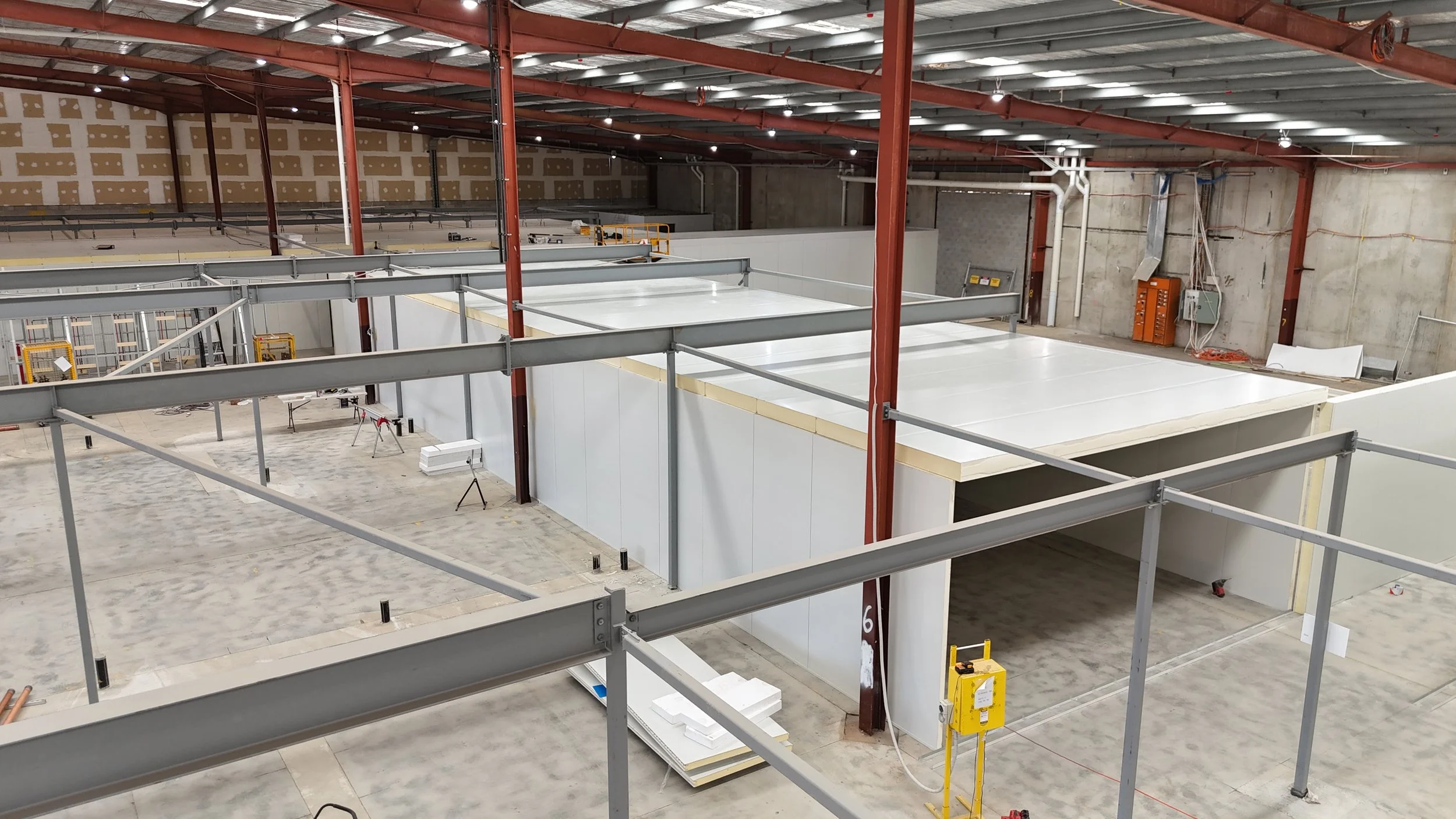Building the Laboratory of the Future: A Construction Blueprint for Adaptive, Sustainable and High-Performance Research Environments
At Connected, we do not see the laboratory of the future as a distant ideal. It is a practical, buildable reality already shaping the projects we deliver. As scientific research accelerates, laboratory environments must evolve just as rapidly. This requires a construction-led approach that embeds adaptability, sustainability and technical precision from the very beginning. The result is a research environment that performs at the leading edge today and remains flexible enough to support scientific progress for decades.
A Multi Functional Research Ecosystem
The modern laboratory is no longer a single purpose environment. It is a dynamic ecosystem that supports a wide range of scientific, operational and human needs in one integrated space. Wet and dry laboratories sit alongside offices and analytical spaces for data-driven research. Collaboration areas promote interdisciplinary exchange. Wellness and quiet zones reduce cognitive fatigue. Biophilic and outdoor spaces boost creativity and wellbeing.
This blend of environments enables researchers to transition fluidly between experimentation, analysis, collaboration and recovery. It elevates both scientific productivity and human performance. The laboratory of the future is designed to support complex R and D through spatial diversity that encourages spontaneous knowledge exchange and cross-disciplinary problem solving.
Scientific Efficiency, Engineered Through Construction
Scientific efficiency must be built in from the start. Our construction approach focuses on creating spaces that support rapid research cycles and high utilisation. Automation-ready infrastructure allows for robotics integration, including future technologies that may not yet be commercially available. Spaces are designed around scientific capability rather than single use applications. Shared equipment zones reduce duplication of capital assets and increase utilisation.
These construction choices deliver measurable operational benefits such as reduced downtime, greater researcher density, lower lifecycle costs and increased facility agility.
Structural Flexibility: Adaptability Built Into the Bones
True flexibility cannot be achieved through furniture alone. It must be engineered into the structure itself. Our methodology prioritises adaptability so that laboratories can evolve without costly disruption.
Laboratory grids are optimised to support safe operations, future retrofits and robotics integration. Flat slab construction, whether post tensioned or bubble slab, allows unrestricted room layouts. Soft concrete cores are positioned to enable future service penetrations. Slab to slab heights are designed to allow additional floors within the same building envelope.
Services are integrated with long term adaptability in mind. Distributed air handling plantrooms and accessible risers allow efficient upgrades. Spare riser capacity is planned at around twenty to thirty per cent for future expansion. Modular service grids in circulation spaces support plug and play reconfiguration. Mobile furniture systems with flexible reticulation, along with continuous ceiling to riser connectivity, simplify future modifications.
This approach creates laboratories that remain relevant and functional for decades rather than requiring major reinvestment.
Environmental Sustainability: Constructed for Net Zero
High performance laboratories can and should align with low carbon outcomes. Our sustainability strategy integrates environmental performance into all stages of construction.
Materials are selected for their reduced carbon footprint, including the use of engineered timber where appropriate. Building orientation, form and envelope performance are optimised to reduce energy demand. Airtight construction and high performance glazing improve environmental stability. Passive solar principles limit peak mechanical loads.
Mechanical systems are designed for efficiency and resilience. Demand controlled ventilation responds to air quality in real time. Variable flow fume cupboards with risk based manifolding strategies reduce fan energy consumption by up to seventy per cent. Heat recovery systems are included in PC2 and low risk areas, while high efficiency all electric plant reduces carbon intensity. CFD modelling ensures airflows are optimised and unnecessary air change rates are avoided.
Resource recovery systems, including liquid waste treatment, solvent recovery, gas recapture, filtered exhausts, biological waste decontamination and comprehensive recycling, complete the sustainability framework.
Digital Infrastructure: Ready for Tomorrow’s Technology
Digital capability is now fundamental to laboratory performance. Our construction approach embeds the digital and robotic infrastructure required for automated and data rich research environments.
Structural capacity is designed to support robotic processing and biobanking systems. Integrated storage and inventory systems enable precise reagent management. Cobot enabled areas support repetitive or hazardous work. Autonomous mobile robot pathways allow just in time movement of materials. Infrastructure for remote operator systems supports high risk processes.
Converged networks bring equipment, building management systems and laboratory management systems together. Secure, high bandwidth infrastructure supports data-driven science. Continuous monitoring enables “living laboratory” capability, allowing ongoing optimisation of performance and resource use.
Value Engineering: Built for Performance and Longevity
The laboratory of the future must represent a sound long term investment. Through intelligent construction planning, we deliver facilities that minimise operational costs, maximise uptime and maintain flexibility without the need for significant future reinvestment.
Our approach reduces lifecycle costs, increases reliability through redundancy and serviceability planning, supports evolving scientific methods and avoids unnecessary retrofits. By combining construction expertise with deep understanding of research workflows, we simplify the complexity of life sciences delivery and provide certainty from early design through to handover.
Connected. The better way to build the future of research.



